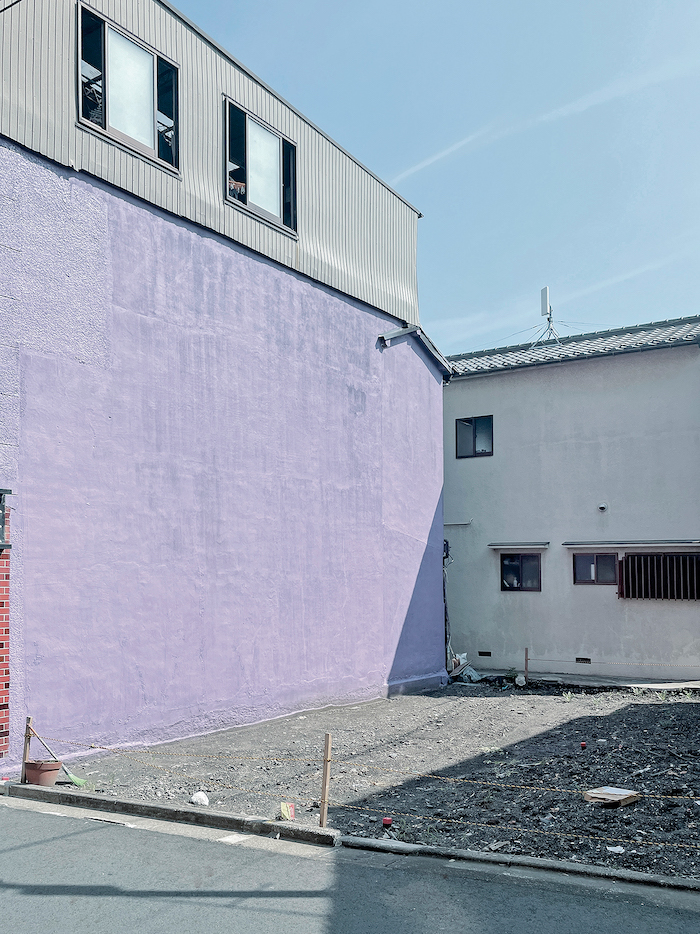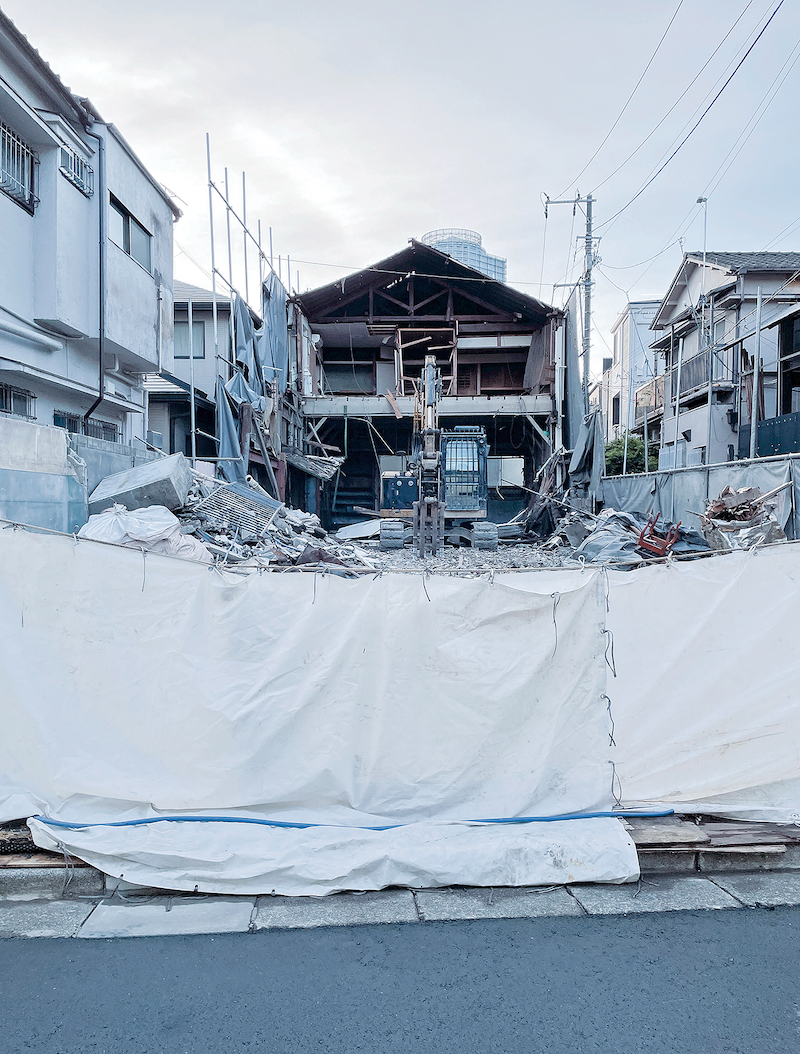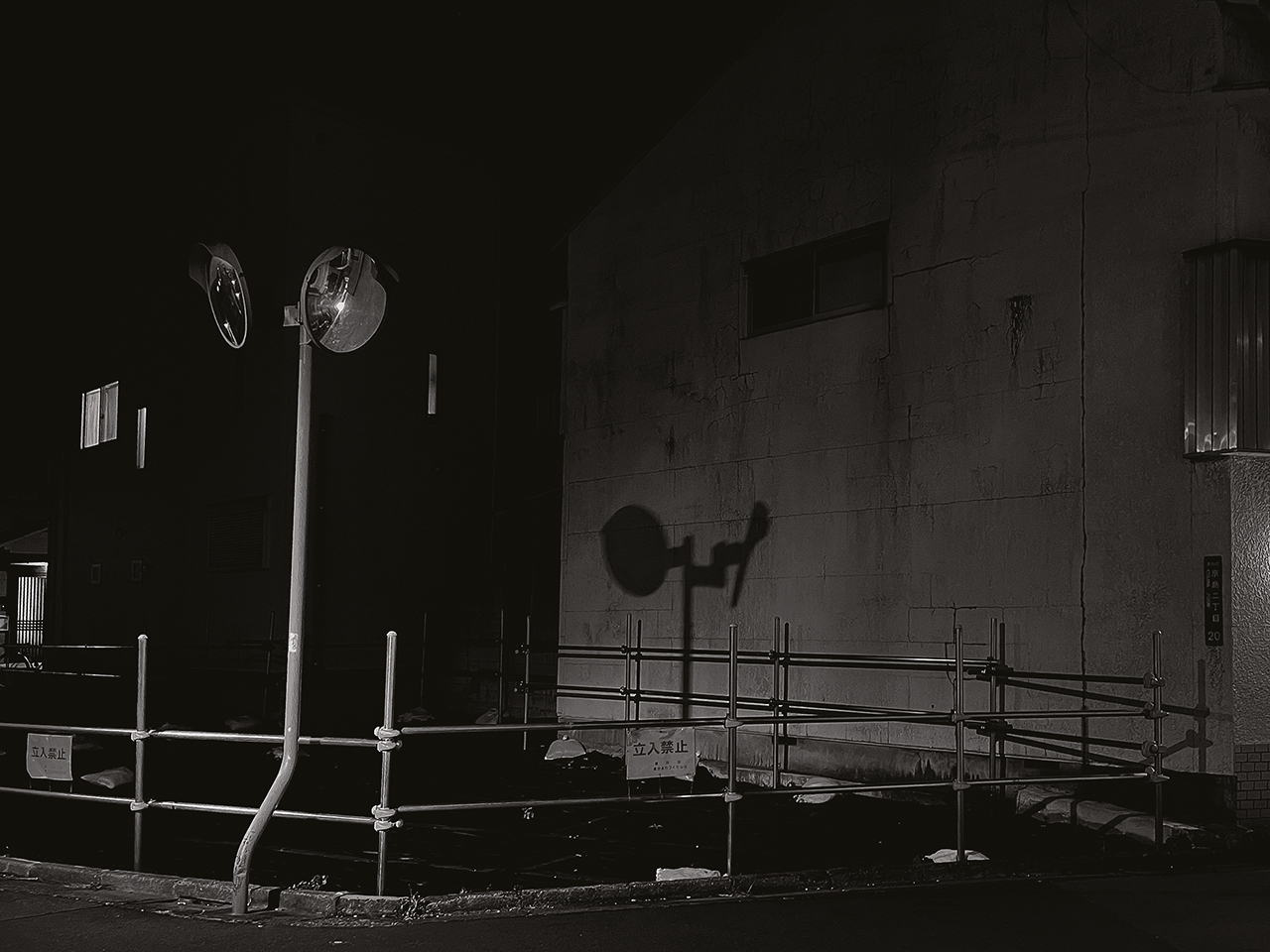
All images © Moe Suzuki.
This article is printed in the upcoming issue of British Journal of Photography: Money+Power. Sign up for an 1854 subscription to receive it at your door.
The average lifespan of a house in Japan is around 30 years. Rather than renovating, homes are torn down and made anew. In her latest project, Suzuki raises questions about the political and economic factors behind the need to scrap
Kyojima is one of Tokyo’s last-remaining old neighbourhoods; an inner-city suburb that survived bombing during the Second World War. Today, traces of old Japan still exist in its narrow alleys, lined with nagaya: traditional wooden houses typical of the Edo era (1603–1867). Moe Suzuki has lived in the area for 10 years, and cycles through Kyojima twice a day on the school run. In recent years, she noticed dramatic changes. New construction sites were pitching up daily; houses covered in scaffolding overnight; whole rows of nagaya demolished and replaced by concrete blocks.
Unlike in other countries, Japanese houses depreciate over time and have an average lifespan of around 20 to 30 years. When a landlord dies or decides to sell, rather than renovating, the houses are torn down and rebuilt. This phenomenon can be traced back to the postwar period. Around 50 per cent of Tokyo was devastated by bombings, generating a surge in demand for low-cost housing. This was followed by building code revisions to improve earthquake resilience. Since then, the housing market has been in a 20-year scrap-and- build cycle – an untenable situation, except for the mortgage lenders and construction companies that cash in. “The construction farm is strong,” says Suzuki. “It has a strong political connection and economic connection. To keep the economy going, they need to scrap.” The cycle explains Tokyo’s ever-evolving urban landscape, despite its 400-year history. The city has become a hotspot for modern architecture, but with that, its history, along with its residents’ collective memory, is being erased.
“Once [the houses were] gone, I couldn’t remember what they used to be. I was shocked by how fragile our memories of this landscape were.”
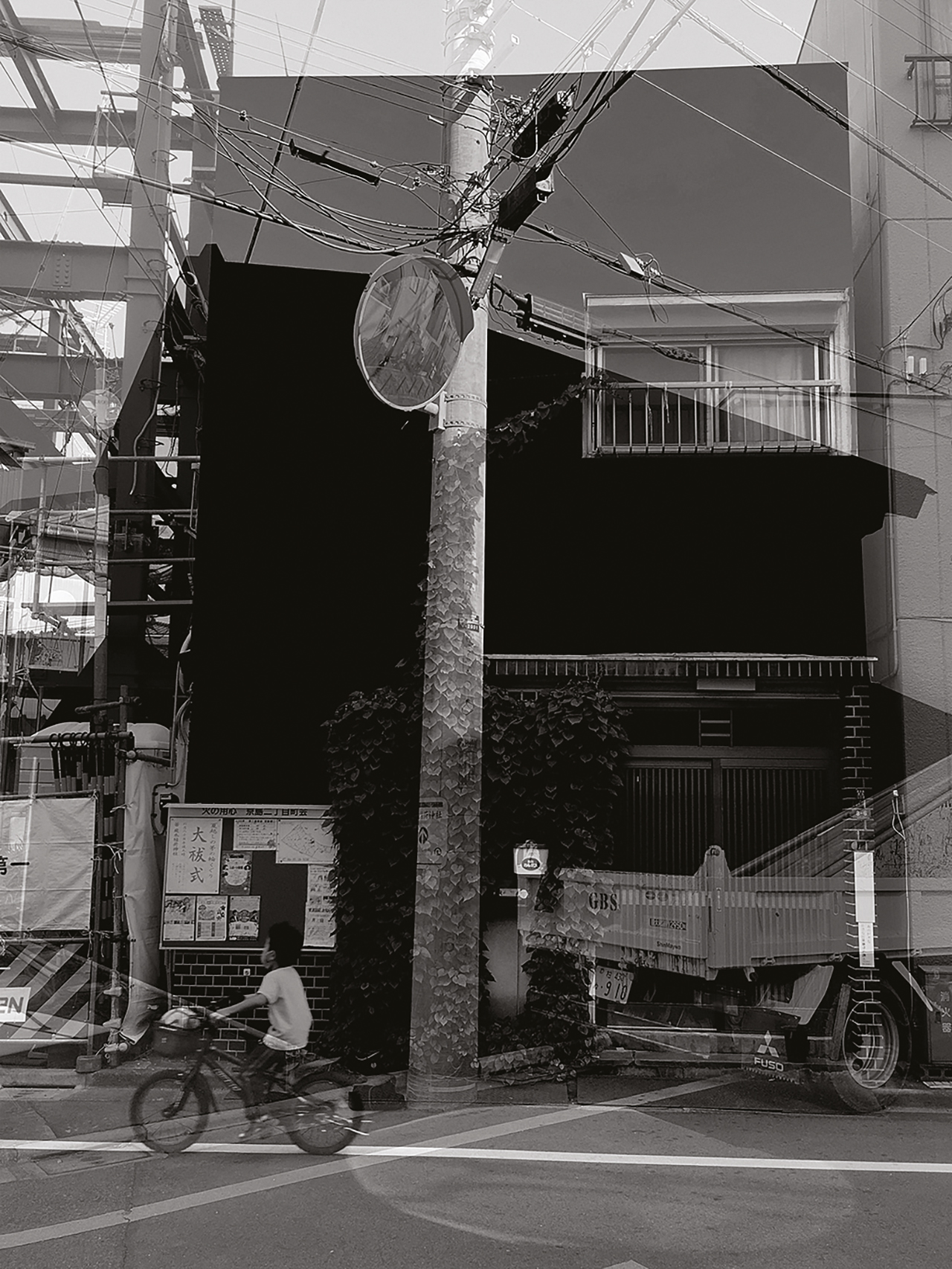
Suzuki’s grandparents lived in Kyojima, so she became familiar with its streets as a young girl. After residing in London for nine years, she moved to a nearby neighbourhood in 2011. “The townscape is changing so rapidly,” she says. “Once [the houses were] gone, I couldn’t remember what they used to be. I was shocked by how fragile our memories of this landscape were.” She started cycling home through different alleys every day, documenting new demolition sites on her phone camera. Over the course of two years, this daily habit formed into a project: Today’s Island Dismantling.
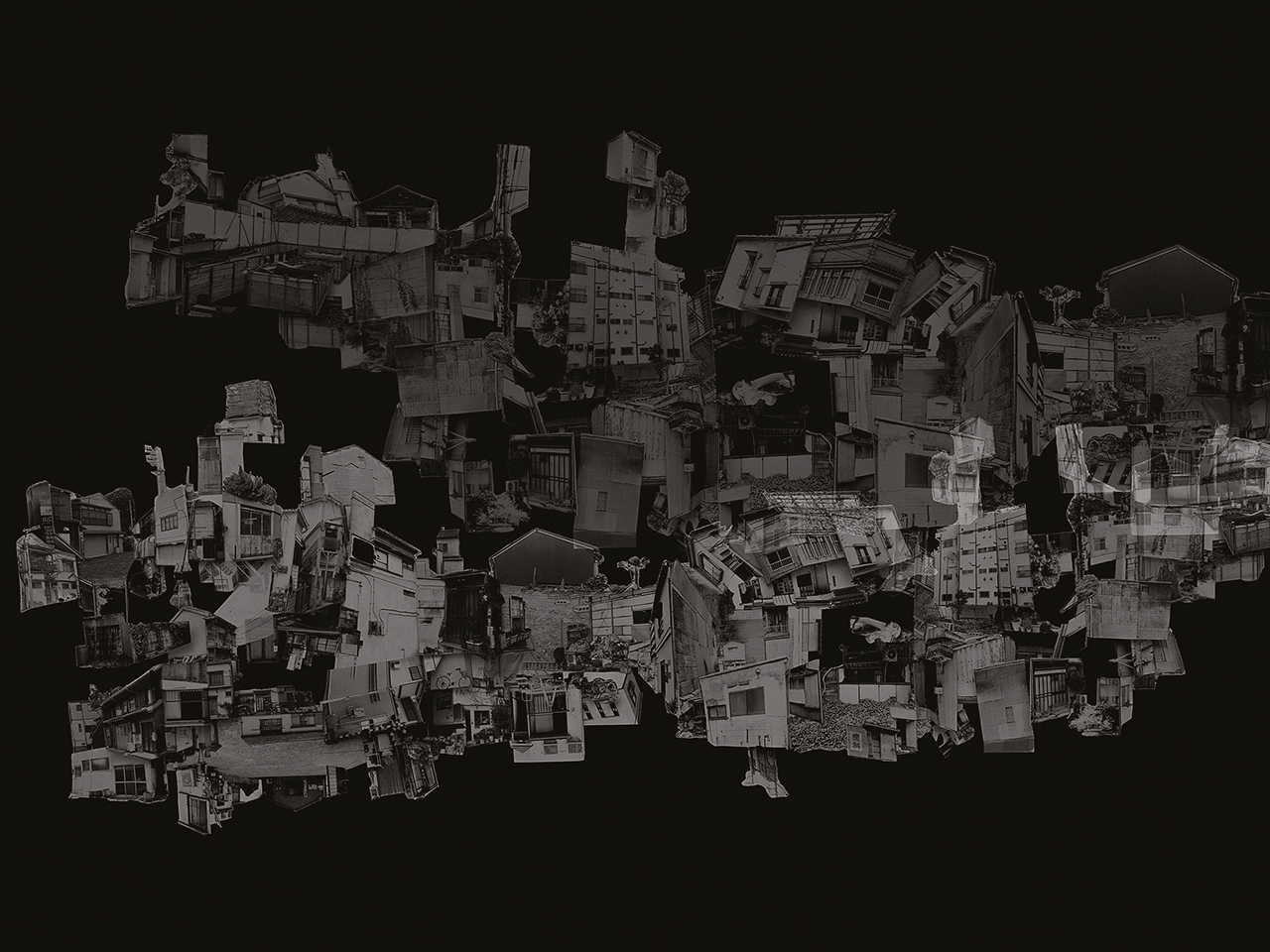
Typically for Suzuki, the series is mixed media, combining documentary, collage and book-making. Her previous project, Sokohi, layered new and archival images in a tactile book to visualise her father’s experience of losing his sight. “[Photography alone] is never enough. Especially now when there are images everywhere,” she says. In Today’s Island Dismantling, the black-and-white images depict old houses that no longer exist, while the colour images show what is left behind. There are also collages of demolished houses, carefully cut out of the landscape and layered as though they are cascading into a black abyss, “to show inside my mind, how the memories are mixing up and dismantling”. But on reflection, Suzuki did not feel they illustrated the scale of change she was witnessing. Taking another view, she saw an opportunity to use the leftover paper cut-outs to create a book. Stacked together, the images form a limited-edition, hand-bound photobook, published by Ibasho gallery. “I found that this was telling the story better, about a disappearing memory and a disappearing landscape.”
While the project is about the erasure of memory, it also poses political and economic questions. Suzuki suspects that emerging out of the pandemic, banks, construction companies and homebuilders are playing catch-up. Another factor is disaster prevention. Kyojima’s narrow alleys and wooden houses make the area more vulnerable to fires and earthquakes. But Suzuki is sceptical. After all, many of these buildings have already survived two major events: the 1923 Great Kant? earthquake, and the 2011 Great T?hoku earthquake.
Towards the end of 2022, Suzuki stopped making pictures. “I was overwhelmed by how much construction was going on. [The neighbourhood] has changed so much, and I felt like I was not able to follow everything.” The photographer moved into her current home five years ago. Out of her window, she can spot four new houses. “The view has completely changed,” she says. “I feel sad that the old houses are gone. And at the same time I’m sad that I cannot remember the Kyojima I used to come to, to visit my grandparents with my mum. The kind of atmosphere; the smell. It’s fading gradually.”
To live in Tokyo is to live in a constant state of renewal. But as humans, we form attachments to places. When these places no longer exist, what do we have to remember them by? For Suzuki, photography is a great preserver of memory, but equally, it is a sobering reminder of how easily we forget.
Today’s Island Dismantling by Moe Suzuki is self published
*Correction: In Issue 7913 Money & Power, it was stated that Today’s Island Dismantling was published by IBASHO Gallery. This statement was made in error. The book is self-published by Moe Suzuki.
The post Moe Suzuki reflects on the erasure of collective memory in one neighbourhood in eastern Tokyo appeared first on 1854 Photography.
